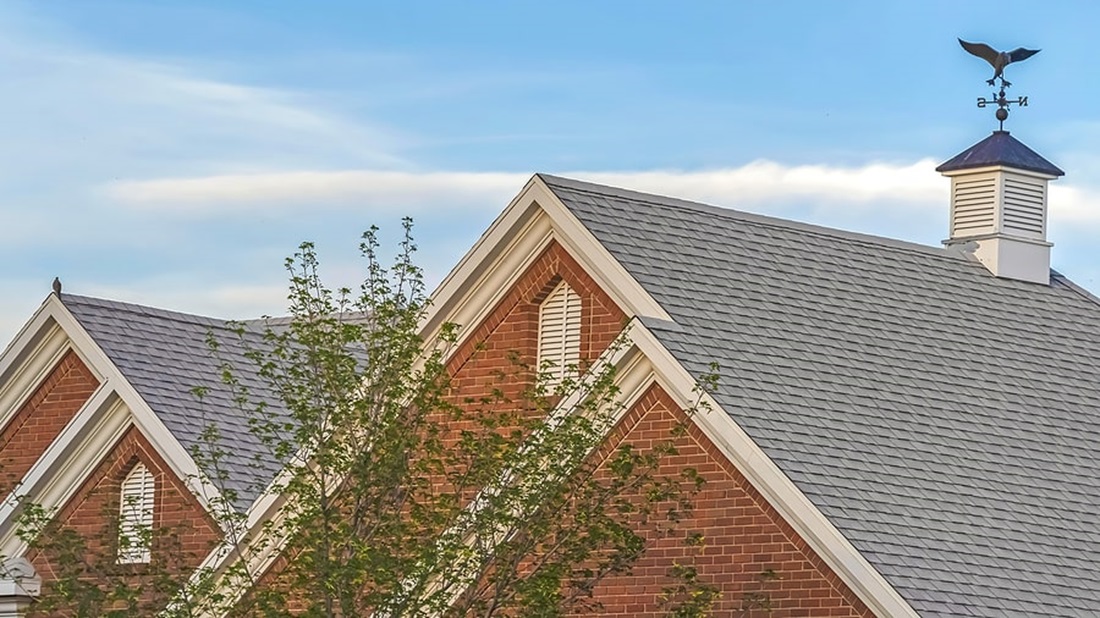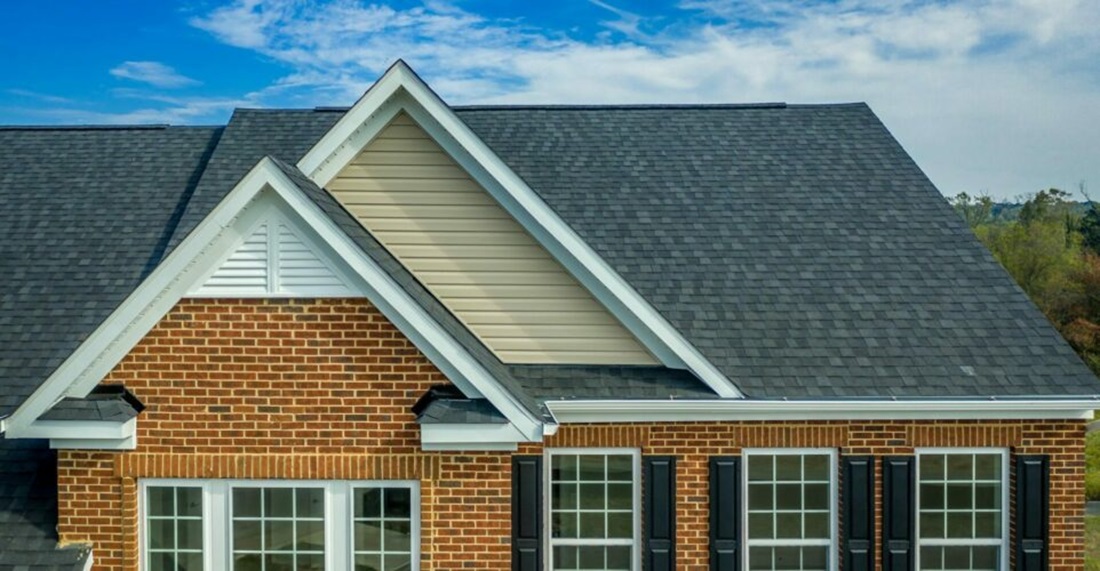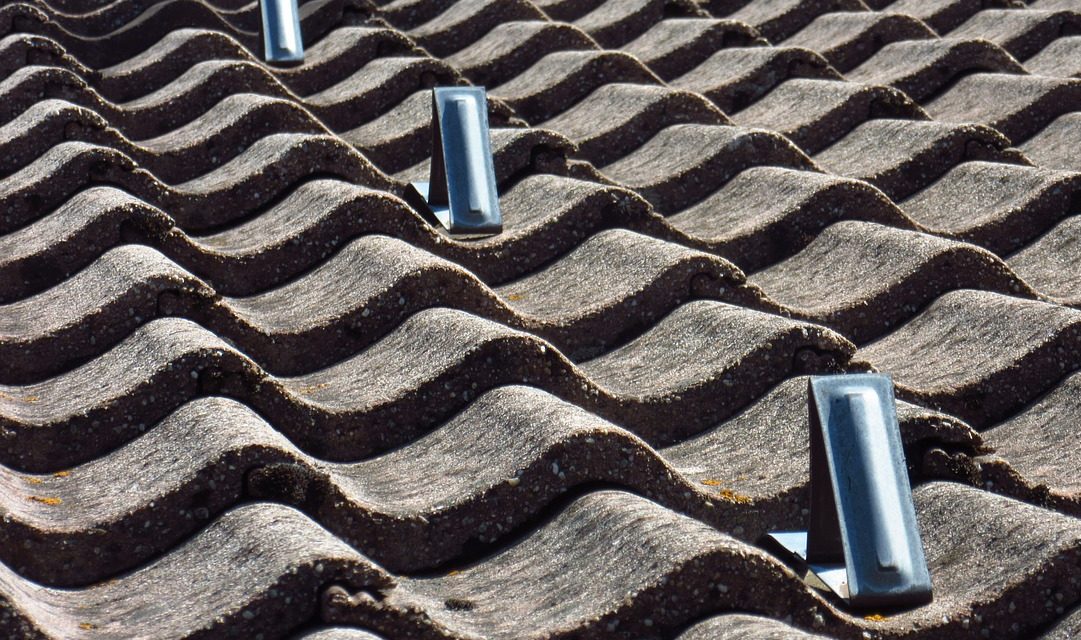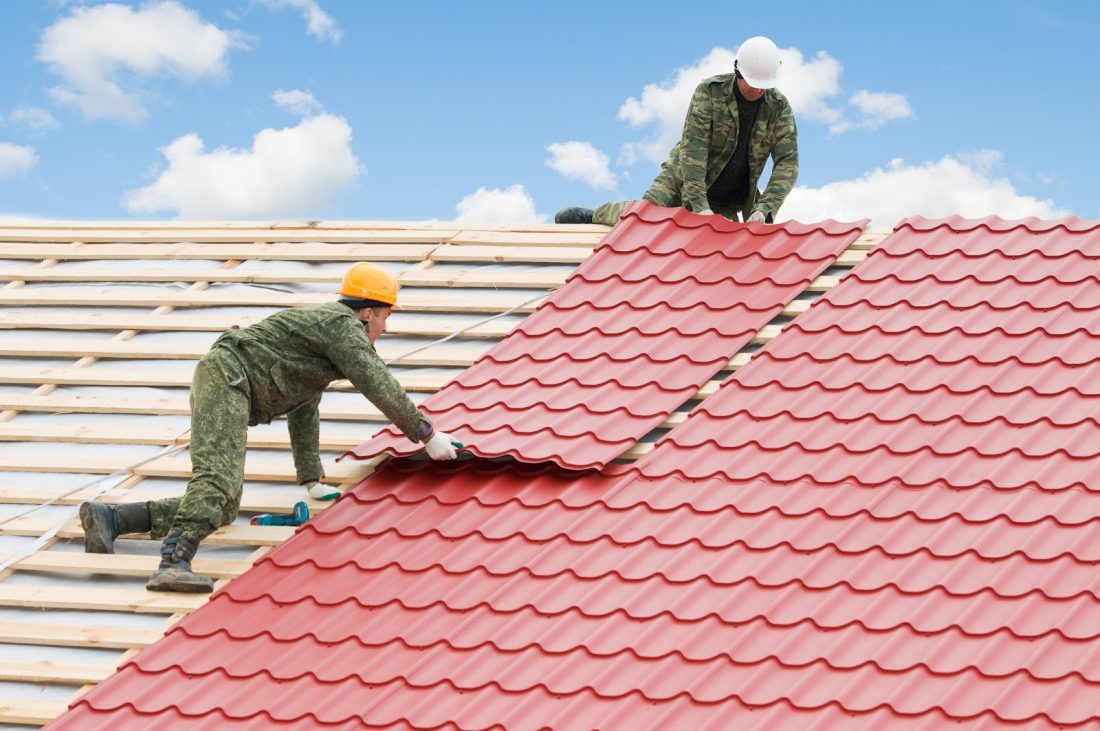A gable roof is a triangle-shaped roof with two sloping sides that come together at a ridge. This roof shape is one of the most popular in traditional residential architecture.
The gable roof design, characterized by its classic peaked appearance, has established itself as a symbol of traditional architectural styling. Its simple construction makes it a favorite for residential structures, offering excellent rain and snow shedding capabilities. Versatility is another key advantage of the gable roof, allowing for additional attic space or vaulted ceilings, enhancing both function and aesthetic appeal.
Builders and homeowners often prefer this style due to its straightforward design, which tends to be more cost-effective and easier to construct than more complex roof structures. The gable roof not only contributes to the overall curb appeal of homes but also provides ample opportunities for customization through different materials and finishes, ensuring that each structure can maintain its unique identity while benefiting from this timeless design.

Introduction To Gable Roofs
Defining The Gable Roof Structure
A gable roof features two sloping sides that come together at a ridgeline, creating end walls with a triangular extension, known as a gable. Typically, these roofs have a pitch that ranges from moderate to steep, enhancing their ability to discharge rain and snow. This structure not only contributes to the longevity of the building by preventing water accumulation but also lends a classic, clean look to the architecture.
Historical Significance And Evolution
The origins of the gable roof can be traced back to the earliest structures in ancient Greece. Over the centuries, the design evolved, influenced by different cultural contexts and technological advancements. This evolution can be seen in the varying styles of gabled architecture, from the simple cottages of medieval Europe to the ornate gable ends of the Victorian era. Despite changes in design preferences, the core benefits of the gable roof—durability, effective water runoff, and aesthetic versatility—have stood the test of time.
Common Variations In Gable Roof Design
Gable roofs are celebrated for their versatility and come in several unique designs that cater to different functional requirements and stylistic tastes. Notable variations include:
- Cross Gable Roof: Integrates two or more gable roof sections at different angles, often seen in houses with complex floor plans.
- Front Gable Roof: Typically found in Colonial-style homes where the gable is at the entrance.
- Dutch Gable Roof: Offers a blend of gable and hip roof features, adding extra space and light under the gable.
- Box Gable Roof: Characterized by a triangular extension that pops out of the roof ridge, forming a box shape.
Each variation provides a unique silhouette and functionality, ensuring the gable roof continues to be a sought-after choice for both modern and traditional construction.

Aesthetics Aspects Of Gable Roofs
The gable roof, with its distinct peak and timeless design, has captured the hearts of homeowners for centuries. More than just a practical element of home design, the aesthetic aspects of gable roofs contribute significantly to a home’s character and curb appeal. Let’s explore how the symmetrical charm and design versatility of gable roofs can enhance any dwelling’s architecture.
The Classic Appeal Of Symmetrical Gables
There’s something inherently pleasing about the balance a symmetrical gable roof brings to a home’s appearance. The two sloping sides meet at a central point, creating a harmonious and proportional look that resonates with our innate sense of beauty. This symmetry is not only timeless but also universally appealing, ensuring that homes with gable roofs never go out of style.
Design Flexibility And Customization
Gable roofs offer an impressive range of customization options. Homeowners and architects can choose from different gable styles such as cross gables, front gables, or Dutch gables, each bringing a unique touch to the property’s character. Moreover, additional aspects like roof materials, pitch, and overhangs allow for even more personalization. The flexibility in design means that a gable roof can be tailored to suit personal tastes and specific architectural requirements.
Incorporating Gable Roofs In Different Architectural Styles
The versatility of gable roofs means they fit seamlessly into a variety of architectural styles. From the classic Colonial to the rustic Chateau or the modern Farmhouse, gable roofs enhance the visual identity of these homes. Whether it’s a simple, unadorned gable for a minimalist look or a more ornate version for traditional styles, gable roofs blend with virtually any home design, proving their adaptability and relevance in diverse architectural landscapes.
Impacting The Street View: Gable Roofs And Curb Appeal
Curb appeal is significantly influenced by a home’s roof, and the gable roof is a formidable ally in creating a striking street view. It adds depth and dimension to the façade, giving a home a solid and grounded presence. Whether viewed from afar or up close, a gable roof contributes to a property’s visual impact, making it stand out in the neighborhood. A well-designed gable roof not only complements the home’s architecture but also enhances its overall aesthetic and market value.
Practical Benefits Of Gable Roof Shapes
Choosing the right roof shape is not just about aesthetics, it’s also about practicality and the gable roof stands out in this regard. Known for its triangular shape, this architectural staple offers a myriad of benefits that extend from enhanced weather resistance to energy efficiency. Below, delve into the key practical advantages that make the gable roof a top choice for homeowners and builders alike.
Weather Resistance And Drainage Advantages
The gable roof is championed for its ability to withstand various weather conditions. Its peaked design doesn’t just cut an impressive figure against the sky—the slope makes it particularly adept at facilitating water runoff during heavy rains.
- Snow and rain – In areas prone to snowfall or heavy rain, a gable roof limits the likelihood of water pooling and potential damage.
- Wind resistance – With proper construction, including secure fastenings, gable roofs can resist heavy winds, providing peace of mind during storms.

Energy Efficiency And Insulation
A gable roof’s structure can contribute to energy savings. The ventilation that its shape allows creates a buffer from the elements, while the attic space it provides can be leveraged for extra insulation. This can greatly reduce the need for climate control, leading to lower utility bills.
- Ridge vents and soffit vents under the eaves promote air circulation, reducing heat buildup.
- The ample attic space can accommodate thick layers of insulation to create an effective thermal barrier.
Space Maximization Under The Roof
One of the most attractive features of a gable roof is the additional space it creates. This attic space can serve a variety of purposes:
- Storage – A safe place to keep seasonal items or personal belongings.
- Extra living space – Easily transformable into bedrooms, home offices, or recreation areas.
- Increased property value – Additional living space contributes to a higher appraisal of your property.
Maintenance And Longevity Of Gable Roofs
The straight-forward design of a gable roof not only facilitates easier construction but also simplifies maintenance. The longevity of these roofs is enhanced through:
- Lesser complexity in design meaning fewer areas where leaks can occur.
- Easy access for repairs and inspections, thereby increasing the ability to maintain the roof’s condition.
Enhancing Home Value With Gable Roofs
Comparative Market Analysis: Gable Roofs Vs. Other Roof Types
A comparative market analysis reveals substantial insights. Gable roofs, with their distinctive peak and sloping sides, not only offer aesthetic charm but also promote efficient drainage and ventilation. When compared to flat or less common roof shapes:
- Gable roofs are often viewed as more traditional and attractive.
- They hold up better against severe weather conditions, which can be a selling point in many climates.
- Their design is conducive to attic space, allowing for additional living or storage room, which is highly valued by buyers.
Roi On Gable Roof Installations And Renovations
The return on investment (ROI) for installing or renovating a gable roof can be quite favorable. While specific numbers vary, quality gable roof installations tend to yield:
| Project | Cost Recouped |
|---|---|
| New Gable Roof Installation | Up to 70% |
| Gable Roof Renovation | 60-65% |
These figures demonstrate that homeowners looking to increase marketability and home value would do well to focus on their roof.
Attracting Buyers: Gable Roofs And Real Estate Trends
Recent real estate trends show a preference for homes with gable roofs. The reasons include:
- Curb appeal: A stylish gable roof adds unmatched charm and character.
- Ease of maintenance: Simpler roof geometry often translates into lower long-term maintenance costs.
- Adaptability: Gable roofs can complement various architectural styles, adding to their mass appeal.
As these features align with current buyer desires, homes with gable roofs can experience not just quicker sales but potentially higher offers.
Gable Roofs And Insurance: Impact On Home Owner Policies
Finally, gable roofs may affect homeowners’ insurance policies positively. These roofs are known for their:
- Resistance to wind damage, leading to lower premiums in hurricane-prone areas.
- Ability to handle heavy snow load, which can be beneficial in colder climates.
Insurance companies recognize these advantages and often provide more favorable terms for homes with gable roofs. This not only saves money but becomes a point of attraction for potential buyers.
Considerations Before Choosing A Gable Roof
 Gable roofs, with their steep pitches, fare exceptionally well in regions known for heavy rain and snow. The angle promotes efficient runoff, reducing the likelihood of water penetration and structural damage. Nevertheless, it’s imperative to consider the following:
Gable roofs, with their steep pitches, fare exceptionally well in regions known for heavy rain and snow. The angle promotes efficient runoff, reducing the likelihood of water penetration and structural damage. Nevertheless, it’s imperative to consider the following:
- Wind susceptibility: In areas experiencing high winds, a gable roof’s design can become a liability unless properly reinforced.
- Weight tolerance: The structure should support the weight of heavy snowfall without compromising integrity, requiring adequate engineering.
Structural integrity is the keystone when installing a gable roof. Key points include:
- Design complexity: The presence of valleys and hips in more intricate gable designs necessitates a more detailed structural strategy.
- Truss strength: The trusses must be robust enough to uphold the roof’s framework against environmental stresses.
While gable roofs are often more cost-effective than other styles due to their simplicity, costs can vary based on:
- Material selection: From traditional asphalt shingles to modern metal roofing, material choices can significantly affect the overall expense.
- Labor: Skilled installation is a critical aspect that can impact the budget, especially in complex designs or high-cost-of-living areas.
| Zoning Laws | Building Codes |
|---|---|
| Local zoning ordinances may limit the height or overall structure of roofs in a neighborhood, requiring a review before plans are finalized. | Building codes ensure that the roofing system is up to safety standards, and it’s crucial to secure proper permits to avoid legal and financial complications. |
Frequently Asked Questions Of Gable Roof Shape
What Roof Shape Is Gable?
A gable roof has two sloping sides that come together at a ridge, creating a triangular shape on the ends of a building.
What Is The Structure Of A Gable Roof?
A gable roof features two sloping sides that come together at a ridge, creating a triangular shape. This design typically includes a symmetrical pitch and end walls with a triangular extension, known as a gable.
How Do I Know If I Have A Hip Roof Or A Gable Roof?
Inspect your roof’s structure: a hip roof has slopes on all sides converging at the top, while a gable roof has two sloping sides meeting at a ridge, forming a triangle on each end.
What Is The Difference Between Gable And A Frame Roof?
A gable roof has two sloping sides that meet at a central ridge, creating a triangular section on each end. A frame roof, commonly referred to as an A-frame roof, forms a triangle with steeply angled sides that extend down to the foundation.
Conclusion
The gable roof shape stands out as a timeless architectural element, reflecting both functionality and aesthetic appeal. It offers homeowners durability and simplicity, making it a top choice for diverse climates. Carefully considering this style can lead to long-lasting satisfaction with your home’s design and resilience.
Embrace the classic gable roof to enhance your property’s value and charm.




